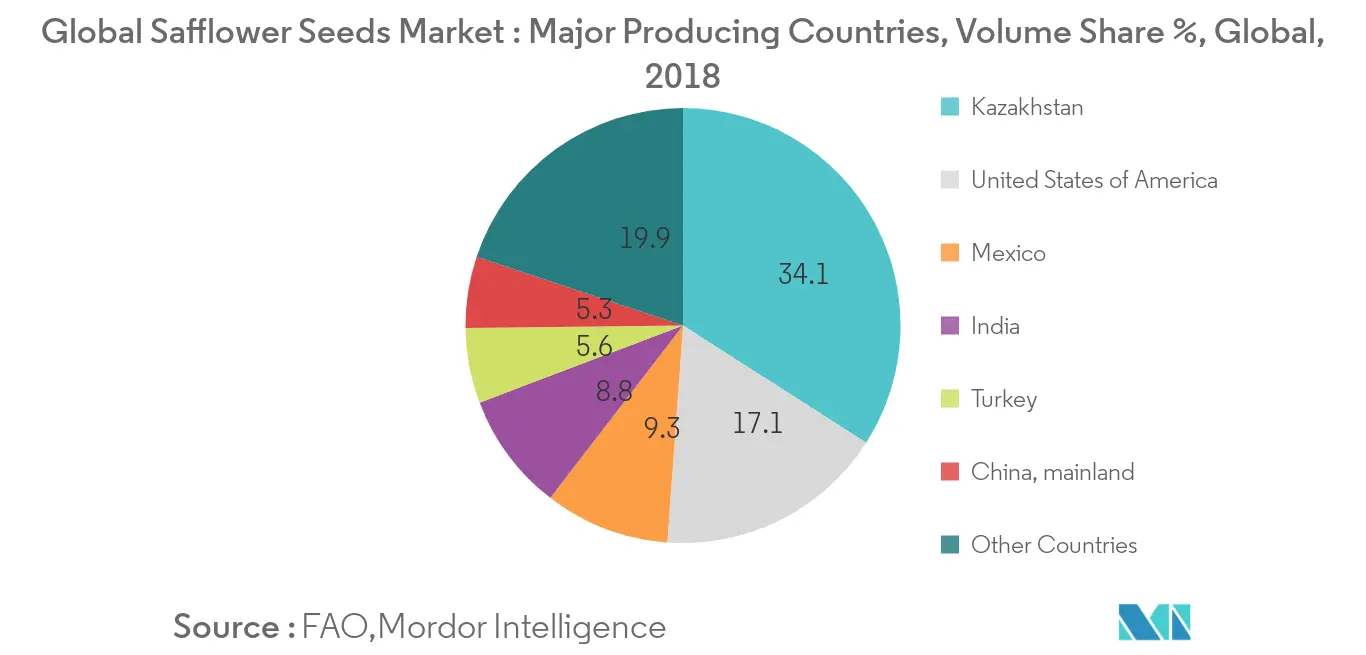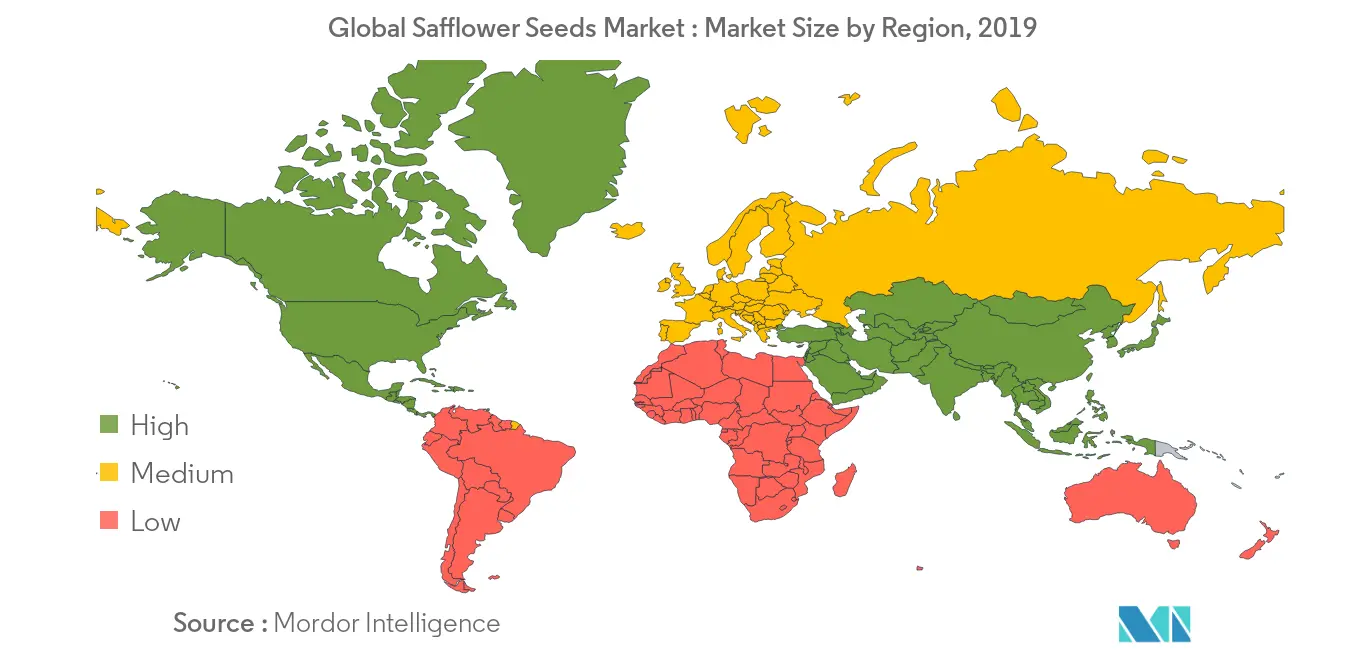Market Trends of Safflower Seeds Industry
This section covers the major market trends shaping the Safflower Seeds Market according to our research experts:
Increased Commercialization of Safflower oil and By Products
According to the Agricultural Marketing Resource Centre (AgMRC), the safflower oil, which is a monounsaturated and polyunsaturated state is used in infant formulas, cosmetics, and salad and cooking oils. Both types of oil are considered 'high-quality' edible oil, and public awareness about its health benefits have made safflower an essential crop for vegetable oil. The oil in linoleic safflower contains nearly 75 % linoleic acid and is used primarily for edible oil products such as salad oils and soft margarine. Safflower meal, by-product after the oil extraction is about 24% protein and is high in fiber and is used as a protein supplement for livestock and poultry feed. A recent innovation in the oil extraction process using supercritical CO2 tends to provide superior oil quality compared to the traditionally extracted oil. In the year 2020, under the Crop Biofactories Initiative, the company has developed the Super High Oleic safflower oil with the help of CSIRO's gene silencing technology that has resulted in SHO which has over 92% oleic acid. With the minimal safflower seed production in the country, the Australian companies have developed one of the superior quality oil of all the other plant kind which has shown a considerable demand for the safflower seed in the Australian Market.

Russia Leads Export of Safflower Seeds
Russia is a significant producer of safflower seeds alongside being the leading exporter of the same. According to ITC Trade Map, in 2019, the country exported safflower seeds worth USD 16.3 million with 52,539 tons. Some of the major exporting countries are Turkey, Belgium, Poland, Netherlands, and others. In 2019, safflower culture is grown on the territory of the Russian Federation mainly in the Southern Federal District, the Volga Federal District and the Republic of Kalmykia. In 2018, The national project "Export of Agricultural Products" the Russian Federation government consolidated the oil and fat industry (to which safflower also belongs) as one of the key factors for the growth of total trade turnover until 2024. As part of this project, there is planned to be an almost triple increase in oil and fat products exports until 2024. Safflower seeds are a popular crop in the region and are mainly used for safflower oil extraction, in addition to being used for bird food and also in cosmetics. Benefits of safflower oil such as reduction of cholesterol levels, management of blood sugar, aiding in weight loss, improving hair, and skin health contribute to its growing popularity, which in turn is aiding exports from the region.


